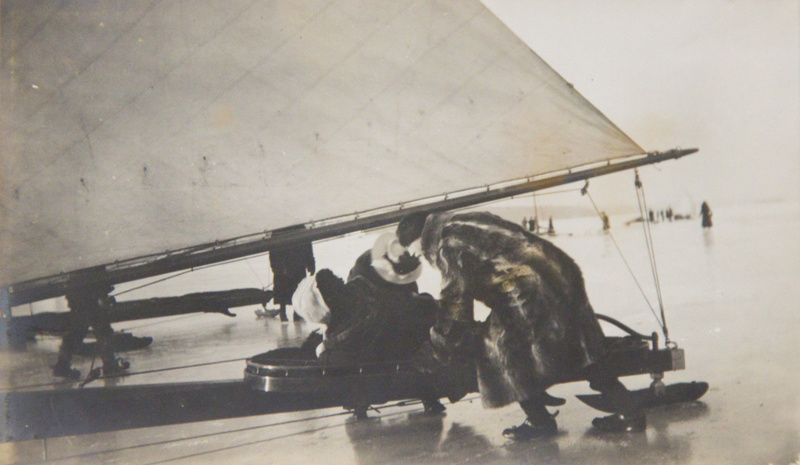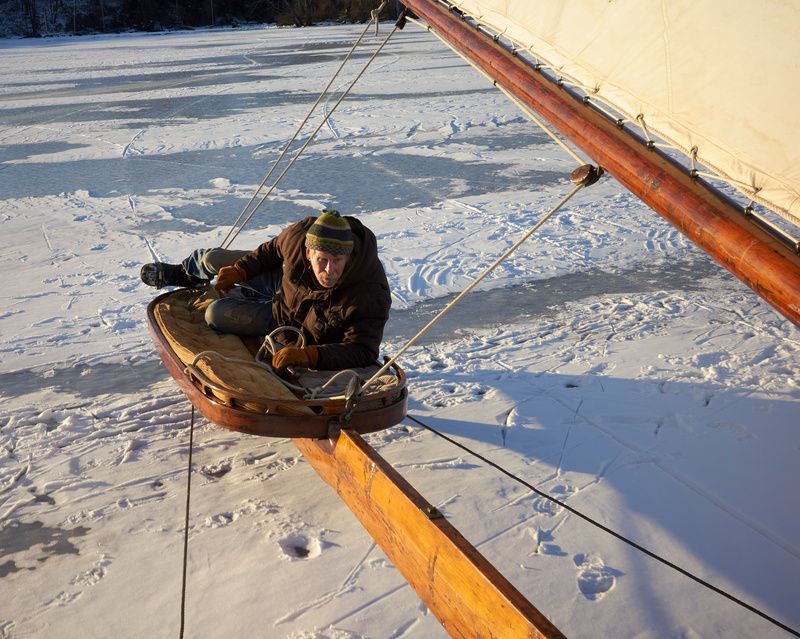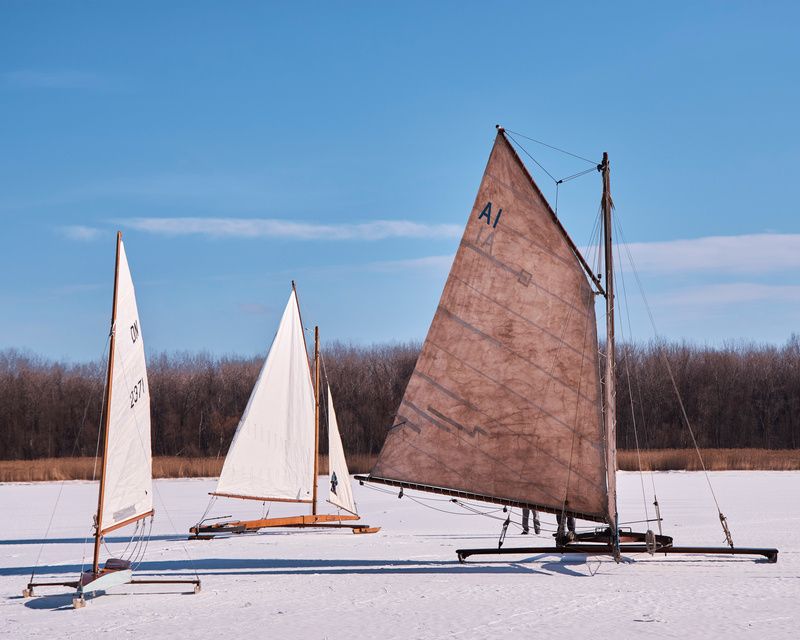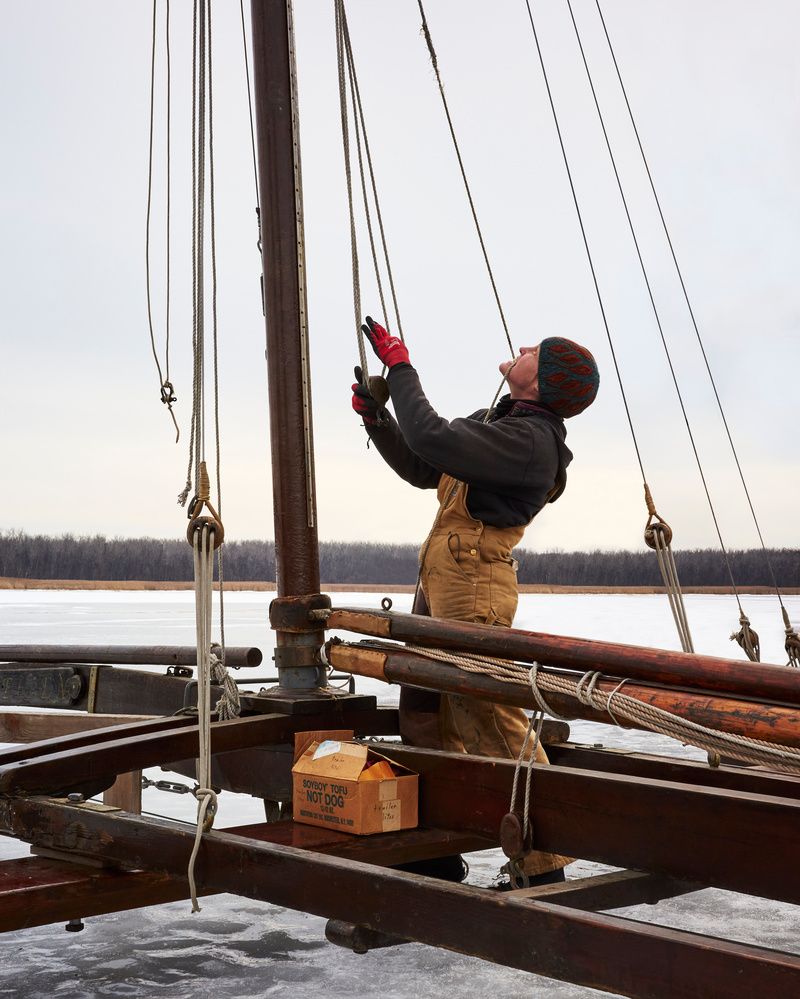Exploring New York’s Industrial Past in "Cathedrals of Industry"
Join photographer Michael L. Horowitz for a journey through 50 years of photographs!


If you wanted to quickly zip up or down the Hudson River, there was a time when the fastest option would have been via ice yacht. According to the National Parks Service, the sleek slim body and large sails of ice yachts once made these unique boats the fastest vehicles on earth, reaching speeds of up to 75 miles per hour as they glided over frozen waters. What began as a utilitarian mode of transport for Dutch settlers evolved into a recreational sport popular among wealthy New Yorkers of the 19th century, and it is still practiced today!

The very first ice boats may have appeared as early as 2000 BC around Scandinavia, according to The Encyclopedia Britannica. However, this mode of transportation gained popularity during the 17th and 18th centuries on the winding canals of the Netherlands. It was also used on the Gulf of Riga, off the Baltic Sea, when the water froze.
The tradition of ice yachting in America was spurred by Dutch settlers who introduced the boats to New York. The Dutch used ice boats on the northern reaches of the Hudson River, from Athens to Albany, to move people and cargo up and down the waterway during the winter months. Dutch ice boats were made by attaching metal and wood runners to the bottoms of hulled working boats.

Throughout the late 1700s and early 1800s, the design and construction of ice boats were refined, and recreational ice yachting became popular among Hudson Valley residents. In the early 1800s, Charles and William Merritt built the first successful lateen-rigged ice boat which had a triangular shape, a single sail, and two long spars, called “boom” and “gaff.” Another popular boat builder of the era was Jacob Buckhout, a resident of Poughkeepsie.
By the late 1800s, wealthy residents along the river had adopted the sport. These property owners had the money and resources to buy the most advanced ice yachts, build structures to house the boats, and hire a crew to maintain them. Soon ice yacht owners began to compete with each other for who had the biggest and fastest vessel. Yachting clubs popped up all over the state, including in towns like Poughkeepsie, Orange Lake, and Athens.

Some of the most ardent fans of ice yachting were the Roosevelts. Franklin Delano Roosevelt was passionate about the sport, captivated by the drama and romance of it. He grew up watching his uncle John compete in races with great success. The family raced their yachts against clubs all across the state, winning again and again. John Roosevelt’s winning yacht, Icicle – constructed by Jacob Buckout – was the largest of the classic yachts, reaching 70 feet long and carrying over one thousand square feet of canvas.
John Roosevelt went on to become a founding member of the esteemed and still-operating Hudson River Ice Yacht Club, which was formed in 1885. The Hudson River Ice Yacht Club was known to have built the finest and fastest ice boats in the country. Their 1908 club book listed 52 ice yachts on the roster, including the iconic Icicle and Vixen, as well as FDR’s Hawk. Hawk was given to FDR as a Christmas gift by his mother and sailed mainly during his years as a student at Harvard. The yacht is now preserved in the collections of the Home of Franklin D. Roosevelt National Historic Site. in Hyde Park, New York.

Though interest in ice yachting in the Hudson Valley dwindled through the later part of the 20th century, the activity experienced a revival in the 1960s. In 1964, ice yacht enthusiast Raymond Ruge helped to reorganize the Hudson River Ice Yacht Club and began to salvage ice yachts found in Hudson Valley barns.
The Hudson River Ice Yacht Preservation Trust is continuing the restoration work that started with Ruge. President of the Hudson River Ice Yacht Preservation Trust, Robert S. Wills, told Untapped New York, “The sport of ice sailing today exists under many guises, with craft made from the most modern of materials like carbon fiber and mylar. The pursuit of speed and competition for the fastest remains today as it did in the 1800s, whether on ice or the Formula 1 track. What we pride ourselves in is restoring and maintaining the beautiful and historic ice yachts of the 1800s in exactly the trim as when they were built – traits that would be lost forever if these old boats were “modernized” to go faster.”

“The boats we sail are plenty fast, and we regularly compete against one another,” Wills shares, “But just as one would not alter the inherent design of a historic Bugatti race car to go faster, we respect and preserve this integral part of ice sailing history which would otherwise be lost.” Wills estimates that only around 70 ice yachts, out of the multiple hundreds that were built between the 1820s and 1910s, still exist today. Even fewer are in sailing condition. Among the many boats the Trust has been able to restore is the World Champion JACK FROST, a vessel originally built in 1883 for Commodore Archibald Rogers.
Though warmer winters and aging vessels present obstacles for modern-day ice yachters, there is still a passionate and devoted community dedicated to keeping the activity alive. The sensation of gliding down the Hudson on an ice yacht is one that can’t be replicated. “To me, the most fascinating and enjoyable part of ice sailing is to ghost along at a slow speed in the late afternoon warm winter light, amongst the beauty of the Hudson River and the Catskill Mountains,” Wills told Untapped New York, “Standing in the isolation of the middle of the Hudson River, so far from the hustle and bustle is something I would recommend to anyone.” If you are interested in donating to help preserve this unique New York sport, please reach out on the Trust website.

Next, check out Floating Palaces, A History of Hudson River Steamboats
Additional reporting by Nicole Saraniero
Subscribe to our newsletter